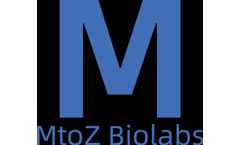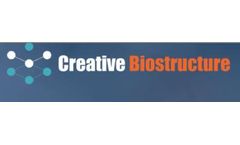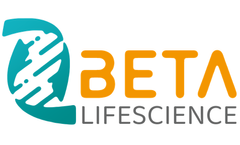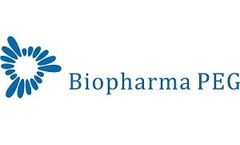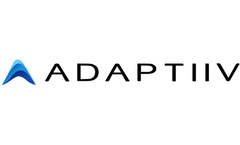Tumor Targeting Articles & Analysis: Older
40 articles found
These advancements not only enhance our understanding of the disease but also pave the way for more targeted therapeutic solutions. Tumor models for breast cancer, which include both in vivo and in vitro systems, are crucial for studying the complexities of tumor biology and testing potential treatments. ...
Compared with traditional cytotoxins, ADCs have the advantages of strong targeting, less toxic side effects, etc. They can accurately target tumor cells, reduce side effects, and improve the therapeutic effect.ADC drugs are mainly composed of monoclonal antibodies, linkers, and small molecule cytotoxins. ...
Kate Sasser from Tempus led a discussion on the potential of antibody-drug conjugates (ADCs), their challenges in targeting tumor antigens, and the future of cancer treatment with Dr. Daniel Johnson, Dr. ...
ByTempus
Since the FDA approved the first oral small molecule targeted therapy for tumors-tamoxifen targeting the estrogen receptor (ER)-in 1977 for the treatment of breast cancer, small molecule drug development has typically focused on screening for high-affinity inhibitors. ...
The purpose of DAC is to treat diseases by targeting and degrading pathological proteins, such as degrading key proteins on the surface of tumor cells in cancer treatment.Common Features of SMDC, ADC, and DACSMDC, ADC, and DAC all utilize advanced structure optimization techniques, combining the active ingredients of drugs with targeted ...
The clinical research targets of nanobodies used for molecular diagnosis include HER2, HER3, PD-L1, AlbudAb, CD20, CD38, CD8, CEA and HGF, etc., mainly involving the field of tumor targeted diagnosis.Nanobodies for Disease TreatmentCamelid IgG antibodies are highly homologous to human IgG, and their immunogenicity can be reduced through nanobody ...
Conventional liposomes As a drug delivery system, traditional liposomes can change the pharmacokinetic properties and tissue distribution of tumor drugs, enhance the target aggregation concentration of drugs, and enhance drug efficacy. However, traditional liposomes still have shortcomings such as unsatisfactory targeting distribution ...
Benefits of fluorescent liposomes Real-time tracking: Researchers can observe the movement of liposomes within tissues and organs, understanding their uptake by cells, biodistribution, and potential off-target effects. Drug delivery optimization: By watching how liposomes interact with different cell types, scientists can fine-tune their design and targeting ...
They may also be quickly degraded or eliminated before reaching their target. Liposomes offer several advantages: Targeted delivery: Liposomes can be modified with targeting ligands, like antibodies, that bind to specific receptors on diseased cells. ...
They are essentially ADC drugs. NIR-PIT drugs can form a new targeted anti-tumor platform that irradiates infrared light to the tumor site through the device. ...
The high specificity of bispecific antibodies enables more precise targeting of tumor cells. On the other hand, promoting the coordinated endocytosis of the two targets through cross-linking can improve the efficiency of toxins entering tumor cells. ...
The above several NF-κB-mediated cancer formation mechanisms can coordinate with each other and interact at different signaling levels to jointly promote tumorigenesis and progression. Currently, tumor-targeted therapy targeting NF-κB is one of the hot spots in cancer treatment. ...
This indicates that immunomodulatory therapy for tumors has matured, and with further research, clinical efficacy has been confirmed. ...
However, most ADCs targeting solid tumors have not progressed beyond phase 2 clinical trials. The limited penetration rate in solid tumors is one important reason, affected by the size of IgG. In addition, excessive binding of FcRn can cause ADCs to return to the extracellular circulation, increasing exposure in healthy tissues, which not only ...
Structurally, an ADC consists of monoclonal antibodies (Antibody) that target specific antigens on tumor surfaces, cytotoxic drugs (drugs) that kill tumor cells, and linkers (Conjugate/ linkers) that conjugate cytotoxic drugs to antibodies. ...
In addition, if the size of the antibody part is smaller and the binding force is higher, the drug molecules can penetrate into the solid tumor better, such as a new class of DARPin (designed ankyrin repeat proteins)-toxin-conjugated drugs. DARPins are a new generation of target-binding proteins, with smaller size and higher binding force. So DARPins are ideal ...
In theory, molecules that bring effector molecules to the surface of tumor cells can play the role of antibody guidance The choice of antibody for ADC drugs depends on the target of the disease. Targets can be divided into tumor-specific antigens (TSA) and tumor-associated antigens (TAA) according to their ...
Antibody-drug conjugate (ADC) is one of the fastest growing fields in tumor therapy, which consists of monoclonal antibody (Antibody), linker (Linker) and active drug (Payload). ...
This case study illustrates designing and fabricating silicone bolus using the Adaptiiv software solution. This flexible silicone bolus fabrication process was then compared to the fabrication process of a rigid 3D printed bolus to determine whether it yielded comparable or improved plan metrics for treating an inner canthus ...
Transcriptomic data demonstrated that this T regulatory cell population was present in all 19 solid tumor cancers but not in the two blood cancers. Prilic and team hypothesize that targeting the newly identified T regulatory cell population may be an effective way to more specifically target solid tumors. This is especially ...


